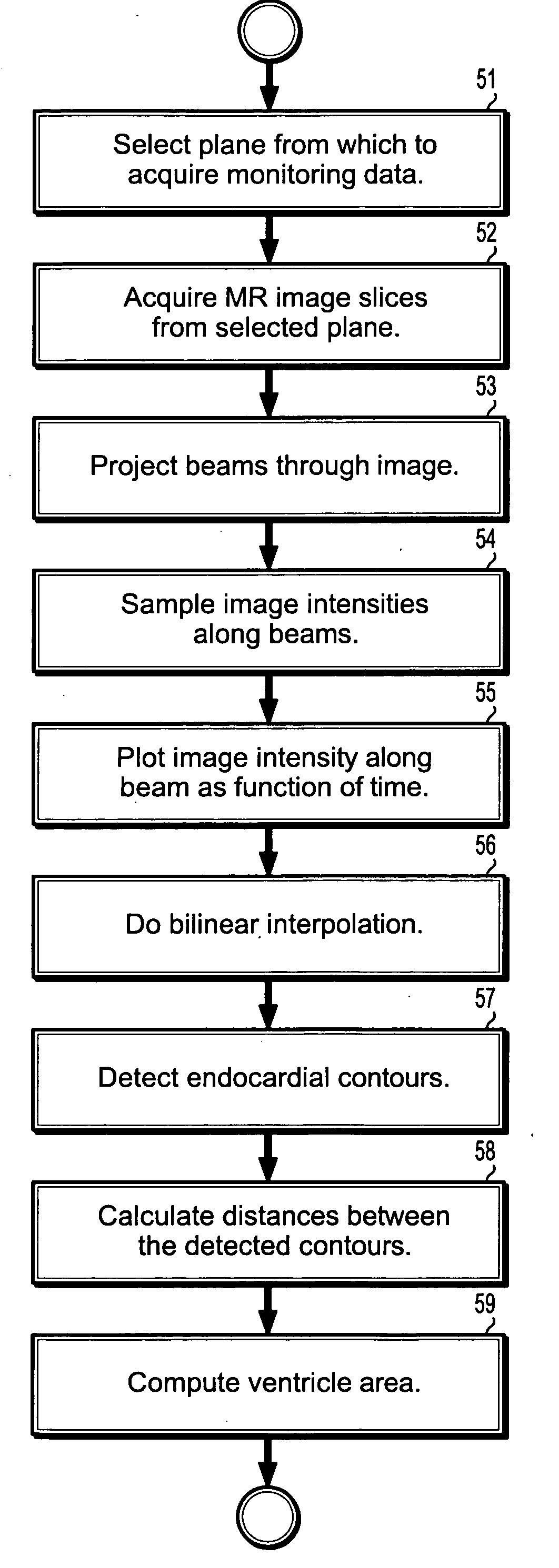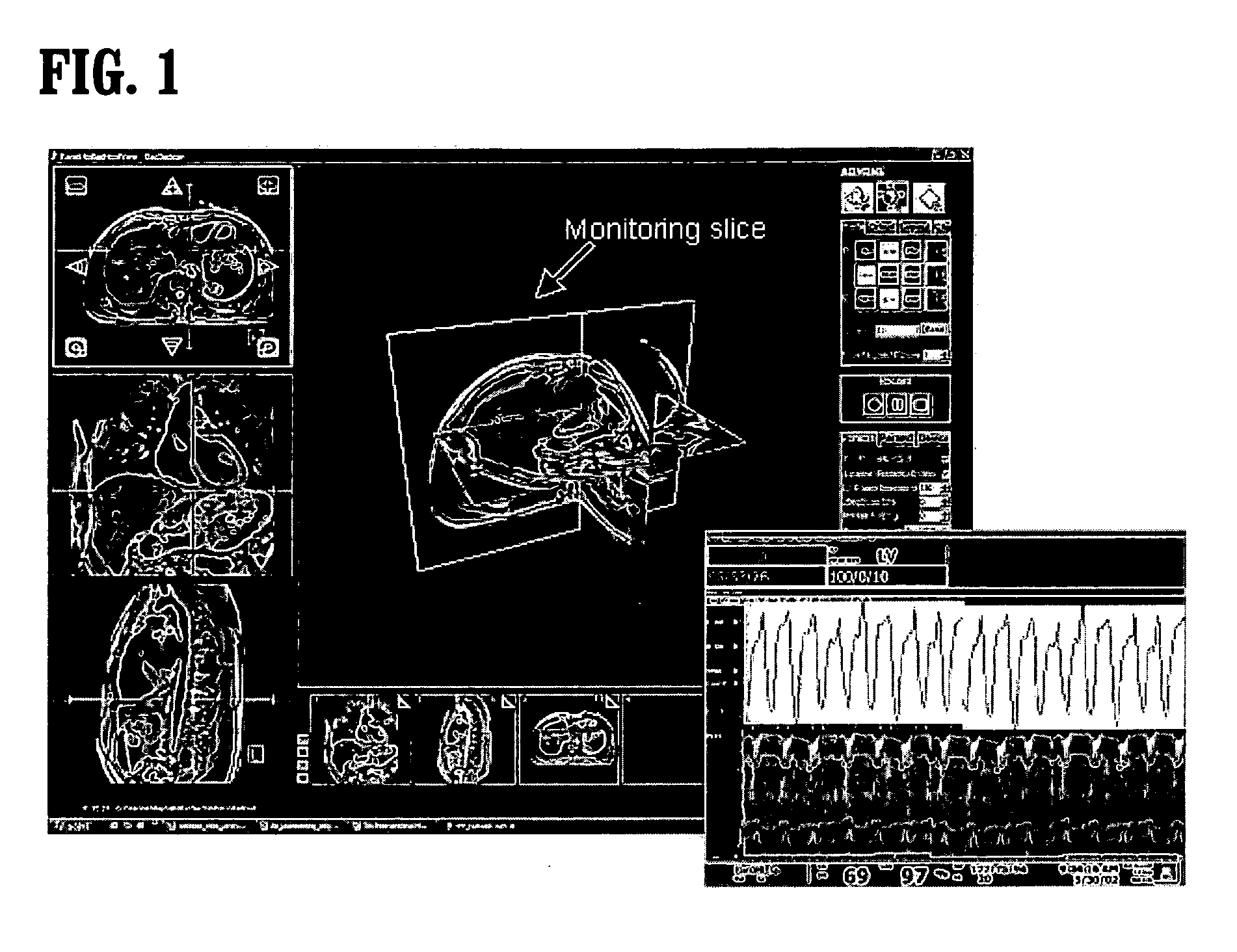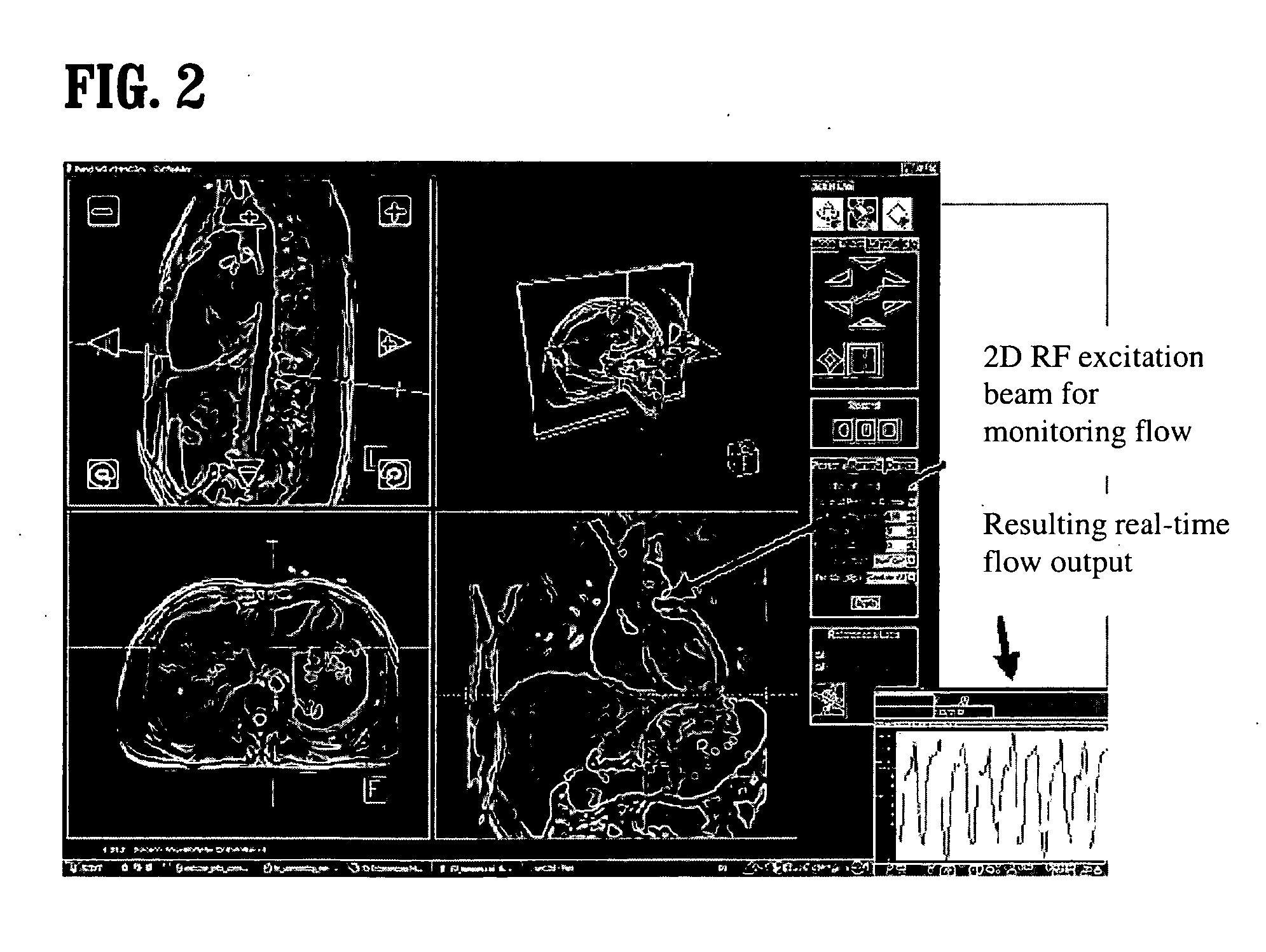System and method for image based physiological monitoring of cardiovascular function
a physiological monitoring and image-based technology, applied in image analysis, medical science, image enhancement, etc., can solve the problems of non-diagnostic ischemia detection, non-reporting of ischemic changes on electrocardiogram (ecg) during dobutamine stress testing or mr-guided intervention, and inability to detect ischemia, etc., to achieve more sensitive feedback and increase sensitivity
- Summary
- Abstract
- Description
- Claims
- Application Information
AI Technical Summary
Benefits of technology
Problems solved by technology
Method used
Image
Examples
Embodiment Construction
[0015] Exemplary embodiments of the invention as described herein generally include systems and methods for real-time monitoring of heart function using magnetic resonance imaging (MRI), interleaved with imaging used to guide or perform stress testing or interventional cardiovascular procedures. Accordingly, while the invention is susceptible to various modifications and alternative forms, specific embodiments thereof are shown by way of example in the drawings and will herein be described in detail. It should be understood, however, that there is no intent to limit the invention to the particular forms disclosed, but on the contrary, the invention is to cover all modifications, equivalents, and alternatives falling within the spirit and scope of the invention.
[0016] As used herein, the term “image” refers to multi-dimensional data composed of discrete image elements (e.g., pixels for 2-D images and voxels for 3-D images). The image may be, for example, a medical image of a subject...
PUM
 Login to View More
Login to View More Abstract
Description
Claims
Application Information
 Login to View More
Login to View More - R&D
- Intellectual Property
- Life Sciences
- Materials
- Tech Scout
- Unparalleled Data Quality
- Higher Quality Content
- 60% Fewer Hallucinations
Browse by: Latest US Patents, China's latest patents, Technical Efficacy Thesaurus, Application Domain, Technology Topic, Popular Technical Reports.
© 2025 PatSnap. All rights reserved.Legal|Privacy policy|Modern Slavery Act Transparency Statement|Sitemap|About US| Contact US: help@patsnap.com



